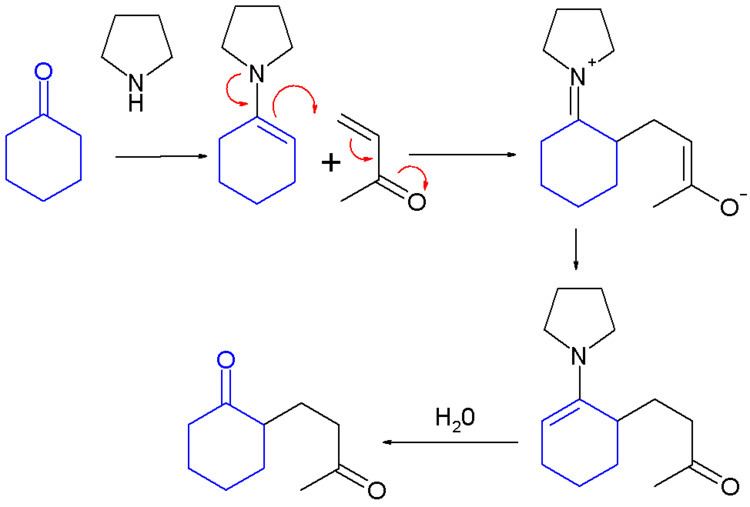 | ||
The Stork enamine alkylation, involves the addition of an enamine to an alpha, beta-unsaturated carbonyl acceptor in a process similar to the Michael reaction. The product is then hydrolyzed by an aqueous acid to produce a 1,5-dicarbonyl compound.
The process:
- formation of an enamine from a ketone
- addition of the enamine to an alpha, beta-unsaturated aldehyde or ketone
- hydrolysis of the enamine back to a ketone
When the electrophile is an acyl halide, a 1,3-diketone is formed (Stork acylation). The reaction is named after its inventor: Gilbert Stork.
Variations
In a special case of this reaction type it is also possible to alkylate ketones or aldehydes with alkyl halides as less reactive electrophiles:
In this method a carbonyl compound is converted to an imine by alkylimino-de-oxo-bisubstitution with a primary amine. The imine is then reacted with an Grignard reagent to the corresponding magnesium salt to an intermediate capable of displacing a halide. Hydrolysis once again yields the alkylated ketone.
